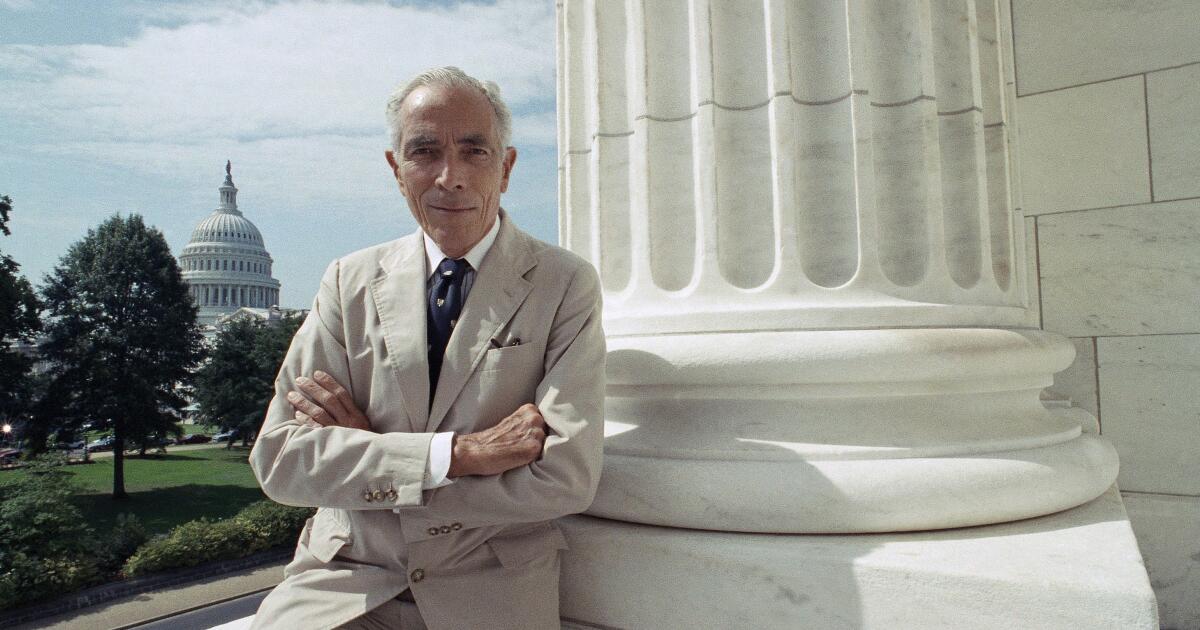
A proposal to brand a new type of federal Pell Grant as “Trump Grants” has sparked pushback from Rhode Island lawmakers who want the program to retain the name of its creator: the state’s longest-serving U.S. senator, Claiborne Pell.
The name change is tucked inside a House spending bill for the departments of Labor, Health and Human Services, and Education for the coming fiscal year.
Rhode Island’s congressional delegation last week argued that the proposal would “erase Senator Pell’s name from a program that has uplifted generations and replace it with a President whose record on education is defined by cuts and dismantlement is a profound insult to that legacy.”
Created as a way to promote access to education, Pell Grants are scholarships reserved for undergraduates and other students with the most significant financial need. Pell, a Democrat, was pivotal in getting the program enacted in 1973.
Pell died in 2009 after having Parkinson’s disease. He was 90.
Through the program he created, lower-income Americans can currently receive up to $7,395 annually for roughly six years. Unlike loans, the grants generally don’t need to be paid back but often don’t cover the full cost of college. According to the Department of Education, $31 billion in Pell Grants went to about 6.5 million undergraduate students in fiscal year 2023.
With new tweak to Pell Grant program, controversy erupts
Under the massive tax and spending cuts package that President Trump signed into law in July, the Pell Grant program was tweaked to include a new grant called the Workforce Pell Grant. Starting next year, students enrolled in eligible career training programs can receive Pell Grants as long as they are in “in-demand industry sectors or occupations.”
A separate House appropriations bill has since proposed renaming Workforce Pell Grants as Trump Grants, a change Rhode Island’s congressional delegation objected to in a letter. Democratic U.S. Reps. Gabe Amo and Seth Magaziner said Trump’s record on education includes efforts to dissolve the federal Department of Education, freeze federal funding for education and research, and pressure schools to roll back initiatives such as those focusing on diversity, equity and inclusion.
“These grants should remain rooted in the legacy of Senator Pell, whose name symbolizes opportunity, integrity and the belief that education is the cornerstone of a strong democracy,” the two lawmakers wrote.
Who was the father of the Pell Grant program?
Claiborne Pell represented the smallest state in the country as its U.S. senator for 36 years.
Pell, the son of a New York congressman, was first elected to the Senate in 1960 and quickly became known as an unabashed liberal who prioritized eliminating financial barriers to higher education — even as a descendant of early New York landowners who lived among the old-money families in Rhode Island’s affluent Newport.
Pell was a multimillionaire who often wore old, ill-fitting suits and sometimes jogged in a tweed coat. He also had a deep fascination with UFOs and extrasensory perception.
Pell devised legislation that Congress eventually enacted in 1973 that began providing direct aid to college students. At the time, the funding was called Basic Education Opportunity Grants, but eventually changed to Pell Grants in 1980.
He also helped establish the National Endowment for the Arts and National Endowment for the Humanities.
When asked his greatest achievement, Pell always was quick to answer, “Pell Grants.”



